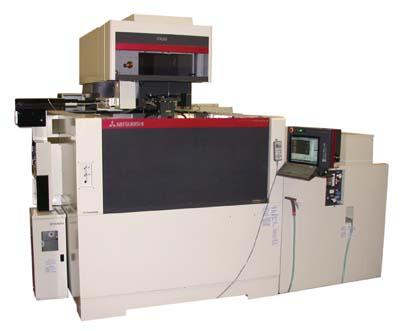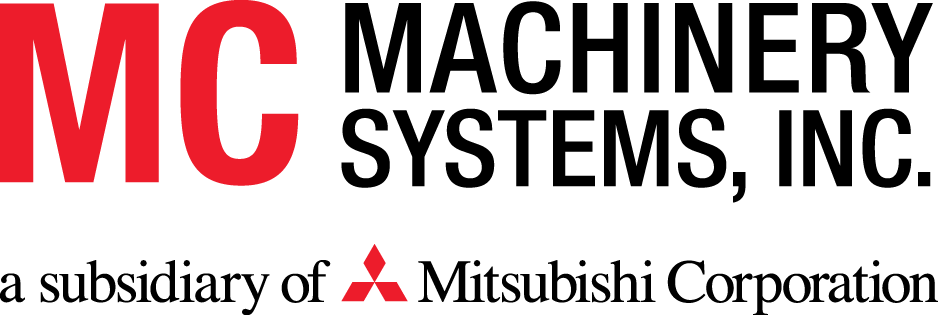
MC Machinery Systems Inc. introduces its newest FA30V Advance wire EDM for large-part manufacturers. The FA30V Advance uses a new inserted AT design and 16.5 inches of Z-axis travel, a maximum Z height of 26.5 inches can be achieved. The machine delivers another full inch of travel in the U/V, compared with previous models, at ±4 inches. This provides steeper taper angle capabilities.
The machine incorporates Mitsubishi's new advance CNC M700 series control with a 15-inch touch screen monitor for easy user interface and optimal programming functions. SL (Step Less) Control helps improve the accuracy when finishing stepped-shaped workpieces. Power Master (PM) Control enables full automation from rough to finish machining and makes machining multiple parts with varying thicknesses and shapes faster and easier, saving up to 50 percent machining time over previous models.
The ultra high-speed V500 power supply produces a fast machining speed at 47 square inches per hour, greatly improving machining performance for difficult-to-cut materials, such as titanium alloy or heat-resistant high-nickel alloys. Automatic wire threading (AT) provides high-speed auto-threading for productivity improvements. The AT unit combines a high-performance load detection sensor and quick retry function, which provides many hours of unattended operation. Other features of the FA30V Advance include a stainless steel work tank, and virtually maintenance-free stainless steel seal plate.
Contact Details
Related Glossary Terms
- alloys
alloys
Substances having metallic properties and being composed of two or more chemical elements of which at least one is a metal.
- computer numerical control ( CNC)
computer numerical control ( CNC)
Microprocessor-based controller dedicated to a machine tool that permits the creation or modification of parts. Programmed numerical control activates the machine’s servos and spindle drives and controls the various machining operations. See DNC, direct numerical control; NC, numerical control.
- electrical-discharge machining ( EDM)
electrical-discharge machining ( EDM)
Process that vaporizes conductive materials by controlled application of pulsed electrical current that flows between a workpiece and electrode (tool) in a dielectric fluid. Permits machining shapes to tight accuracies without the internal stresses conventional machining often generates. Useful in diemaking.
- threading
threading
Process of both external (e.g., thread milling) and internal (e.g., tapping, thread milling) cutting, turning and rolling of threads into particular material. Standardized specifications are available to determine the desired results of the threading process. Numerous thread-series designations are written for specific applications. Threading often is performed on a lathe. Specifications such as thread height are critical in determining the strength of the threads. The material used is taken into consideration in determining the expected results of any particular application for that threaded piece. In external threading, a calculated depth is required as well as a particular angle to the cut. To perform internal threading, the exact diameter to bore the hole is critical before threading. The threads are distinguished from one another by the amount of tolerance and/or allowance that is specified. See turning.
- wire EDM
wire EDM
Process similar to ram electrical-discharge machining except a small-diameter copper or brass wire is used as a traveling electrode. Usually used in conjunction with a CNC and only works when a part is to be cut completely through. A common analogy is wire electrical-discharge machining is like an ultraprecise, electrical, contour-sawing operation.

